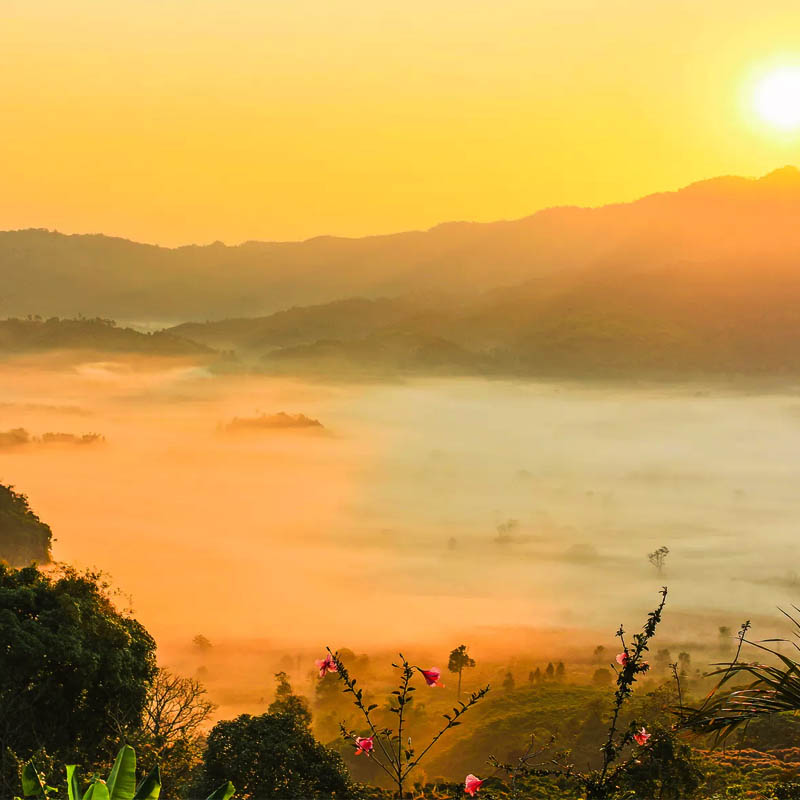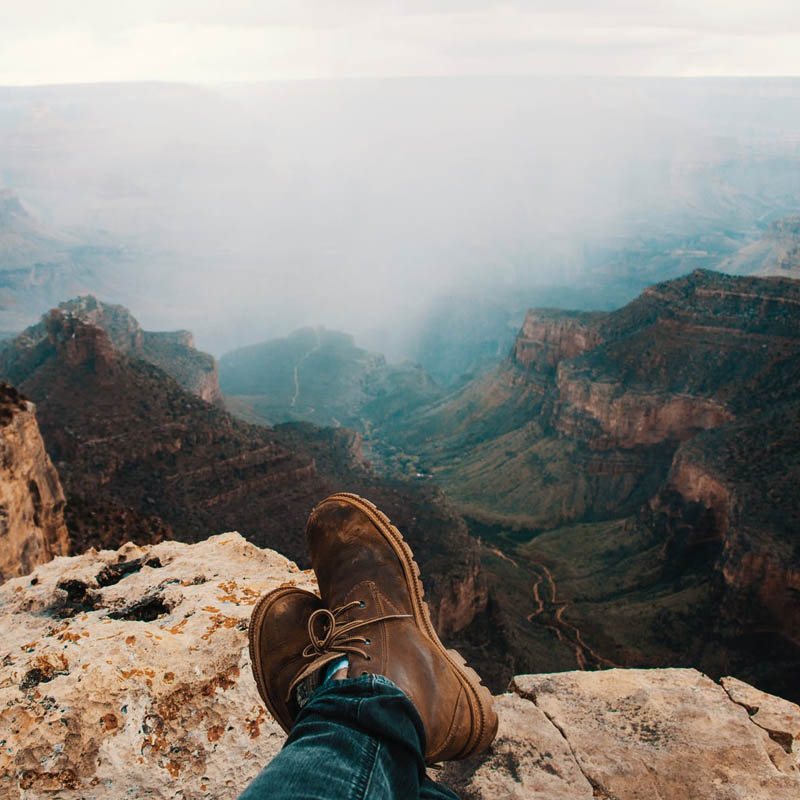Delhi – Rishikesh – Uttarkashi –Gangotri – Rudraprayag – Badrinath –Joshimath – Kausani – Nainital – Corbett
Day Wise Plan
DAY 1: ARRIVE DELHI
Welcome to India- a country where hospitality is a way of life; to a culture steeped in tradition, a land where history lives in music and dance. You will be received at the airport in a traditional manner with garlands and proceed to your hotel for overnight stay.
DAY 2 : DELHI – RISHIKESH (224 KMS / 7 – 8 HRS)
Morning after breakfast drive down to Rishikesh via Haridwar. Here we will take a short visit to Har- ki – Pauri Ghat.
HARIDWAR: The holy city of Haridwar is home to some of the most sacred Hindu rituals. Round the year, devotees from all over the country flock here in their thousands to perform “Pooja” or prayers. Renowned for the “Maha Kumbh Mela” which appears Every 12 years.
After Lunch in local restaurant proceed to sightseeing of Lakshman, Shivanand Ashram and Sawarg Ashram. Evening arti at Parmarth Niketan Ghat.
Return to the hotel for overnight stay.
DAY 3 RISHIKESH – UTTARKASHI (175 KMS / 6- 7 hrs)
In the morning after breakfast drive down to Uttarkashi (1150 m).Upon arrival check in to the hotel.
UTTARKASHI: As the name suggests, Uttarkashi is considered the northern Kashi or Varanasi. The town is situated at an elevation of 1,550 m on the right banks of river Bhagirathi. It is a district located in the northern Himalayan state of Uttaranchal. Its margins also mark the Indo-Chinese precincts. In the evening back to the hotel for overnight stay.
DAY 4: UTTARKASHI – GANGOTRI – UTTARKASHI (95 KMS / 3 HRS -ONEWAY)
Morning after breakfast drive to reach Gangotri (3048 m). A Himalayan village, the starting point for a pilgrimage tour (available only on foot, in 3 days out and back) to the Ganges Source. Unique in good perspective of a view of the snowy peaks of Sudarshan (6,151 m).
GANGOTRI: Gangotri lies in the northwest Himalayas of Garhwal, and is one of the four Holy Dhams (pilgrim sites) of the North India. The Ganga is believed to have first descended to earth at Gangotri. Gangotri is the source of the holy river Ganges. Located at a height of about 3048 meters above sea level in the splendid Garhwal hills, there is something very magical about this important pilgrim destination of the Hindus. Savor its spiritual and natural beauty when on a Tour to Gangotri. On arrival visit to Gangotri Temple and explore surrounding area.
In the evening return to Uttarkashi for overnight stay.
DAY 5: UTTARKASHI – RUDRAPRAYAG (167 KMS / 5 – 6 HRS)
Morning after breakfast drive to reach Rudraprayag via Srinagar.Our trip back to the Bhagirathi along until Together with the Alaknanda river, which we do Rudraprayag follow Arrive and check in at hotel for overnight stay.
DAY 6: RUDRAPRAYAG- BADRINATH (136 KMS / 5 – 6 HRS )
Morning after breakfast drive down to reach Badrinath. The Alaknanda upstream – after its unification with the Bhagirathi he becomes Ganges – on winding road over after Joshimath and Govindghat, after we reach Badrinath (3,122 m),on the banks of the Alaknanda, the most important Hindu pilgrimage destination in the Himalayas With good vision splendid view of the Nilkantha (6,769 m), the “shining summit.” Visit the temple, the hot springs and the Bothia settlement Mana, only 30 km from the border with Tibet.
Upon arrival check in at hotel.
BADRINATH: Badrinath one of the ‘Four Dhams’ is one of the most celebrated pilgrimage spots of the country and is situated at an elevation of 3,133 meters, guarded on either side by the two mountain ranges known as Nar & Narayan with the towering Neelkanth Peak providing a splendid backdrop. The 15mtrs. High temple is dedicated to Lord Vishnu; it is built in the form of a cone with a small cupola of gilt bull and spire. Built by Adi Guru Shankaracharya – the philosopher-saint of the 8th century, the temple has been renovated several times due to damage by avalanches. Its colourful ‘Singh Dwara’ or the main entrance gate gives it a new, modern look.
In the afternoon proceed to visit Mana Village which is last village in this valley.
MANA VILLAGE “The History” :- Just north of Badrinath, is the last village on the old trade route to Tibet, via the Mana pass. In those days, Mana must have been a big and prosperous village, references being made to it in 1624 by Jesuit priests trying to reach the Tibetan kingdom of Guge. Inhabited by people of mixed Indo-Tibetan descent, Mana, survived, or rather thrived, on Indo-Tibetan trade. Today, they survive by doing menial jobs or petty retailing during the pilgrim season in Badrinath. In winter, the entire village moves down the valley, cattle and all, to wait out the winter snows.
Return to the hotel for overnight stay.
DAY 7: BADRINATH- AULI- JOSHIMATH ( 52 KMS / 3 – 4 HRS )
Morning after breakfast drive down to reach Joshimath while visiting Auli. Post sightseeing Auli proceed to Joshimath and check in at hotel for overnight stay. Upon arrival Check in at hotel for overnight stay.
DAY 8: JOSHIMATH – KAUSANI (225 KMS /7 – 8 HRS)
Morning after breakfast drive down to Kausani .The Pindar River below the highest Indian Hill, Nanda Devi (7,817 m), often described as the most beautiful mountain in the world praised. From Kausani (1,890 m) is in good weather all the mountain front of the high Himalayas – Trisul (7,120 m) o Nanda Devi, Panchuli (6,904 m).
Upon arrival at Kausani check in at hotel for overnight stay.
DAY 9: KAUSANI- ALMORA – NAINITAL (117 KMS / 4 HRS)
Morning see the glory of the snow crowned Himalayan range reaches its pinnacle when the sunrays turn them into crimson and gold. Drive down to Nainital via Almora (1,650 m), Take a short visit to famous Nanda Devi temple in Almora and Bazaar. Later on drive to Nainital (1,938 m). Upon arrival check in at hotel.
In the evening enjoy pleasant walk on Mall Road along with lake.
Naini Tal Nainital is a glittering jewel in the Himalayan necklace, blessed with scenic natural spledour and varied natural resources. Dotted with lakes, Nainital has earned the epithet of ’Lake District’ of India. Nainital is a lovely hill station surrounded by mountains on three sides. Once this area had many lakes and it was called the City of 60 lakes. Most of the lakes in the region has disappeared and whatever remains is just a glimpse of what they might have been in the past.
DAY 10: NAINITAL – CORBETT (45 KMS/2 – HRS)
Morning after breakfast drive down to Jim Corbet National Park.Upon arrival check in to the hotel. Afternoon Jeep Safari in the Park to see Tiger, Elephant and many more. Overnight stay at hotel.
Jim Corbet National Park: Situated in the picturesque Kumaon hills in Nainital district, Corbett National Park is the place from where Project Tiger was launched in 1973.The park has a core area of 520 sq. kms with picturesque hilly ridges covered by sal trees. Lower down are the grasslands and bamboo growth. A list of species reported from Corbett included 582 species of birds, 26 species of reptiles, 7 species of amphibians and 50 species of mammals. Elephants are numerous and move around singly or in herds. There are four varieties of deer in the park, and spotted and hog deer can be seen moving about near the river and in the grasslands and the forests. The main inhabitants of the park are the Tiger, Elephant, Gaur, Sambar, Chital, Wild Dog, Sloth Bear, Partridge, Pheasant, Jungle Fowl and numerous other varieties of birds and animals.
DAY 11: CORBETT
Two safaris in the national park, where the Project Tiger “by the Indian government and the World Wildlife Fund was founded (1973). If we do not see Tiger, then we perhaps other large animals, wild elephants, passed away. Species of monkeys, Deer – Chital, Sambar -, Leopards among others
DAY 12: CORBETT – DELHI
Morning after breakfast drive down to reach Delhi. In the evening after fare-well dinner at local specialty restaurant, departure transfer to International airport to board Flight for onward Destination.
DAY 13: Delhi Departs
Highlights:-
Rishikesh– Lakshman Jhoola , Shivanand ashram, Evening Aarti.
Uttarkashi– Vishwanath temple, Staying on the banks of River Bhagirathi
Gangotri– Hot spring , Harsil Valley , Gangotri temple
Badrinath– Rudraprayag, Badrinath temple, Mana village
Joshimath– Auli
Kausani– Panoromic view of Nanda Devi Sanctuary Mountain range
Nainital– Visit Colonial period Market Almora, Boating at Naini Lake
Corbett– Safari at Corbett national park.
Trip Highlights
For unabridged adventure, unaltered natural splendors, Uttarakhand has two destinations dotted all over with breathtaking surroundings, Kumaon and Garhwal. These pretty residents of Uttarakhand are a discovery in their own way for any adventure lover.
If Kumaon is a green table spread, Garhwal is a challenger’s delight. If Kumaon boasts of clear lakes, chirpy forests, floral rainbows; Garhwal flaunts its snow clad peaks, quaint retreats and countless mountain rivers. At every nook and corner, collage of natural wonders and beautiful Himalayan vistas greet the visitors. At every step, backdrop of the mighty Himalayas beckons to take the next step with renewed enthusiasm. However, there’s more to Kumaon and Garhwal than natural brilliance. There are echoes of religious milestones and mythological landmarks. So, whether one’s a nature lover or a spiritual believer, Kumaon and Garhwal offer the tranquil getaway for a memorable holiday.
Description
Delhi – Rishikesh – Uttarkashi –Gangotri – Rudraprayag – Badrinath –Joshimath – Kausani – Nainital – Corbett
Tour Timeline
Day Wise Plan
DAY 1: ARRIVE DELHI
Welcome to India- a country where hospitality is a way of life; to a culture steeped in tradition, a land where history lives in music and dance. You will be received at the airport in a traditional manner with garlands and proceed to your hotel for overnight stay.
DAY 2 : DELHI – RISHIKESH (224 KMS / 7 – 8 HRS)
Morning after breakfast drive down to Rishikesh via Haridwar. Here we will take a short visit to Har- ki – Pauri Ghat.
HARIDWAR: The holy city of Haridwar is home to some of the most sacred Hindu rituals. Round the year, devotees from all over the country flock here in their thousands to perform “Pooja” or prayers. Renowned for the “Maha Kumbh Mela” which appears Every 12 years.
After Lunch in local restaurant proceed to sightseeing of Lakshman, Shivanand Ashram and Sawarg Ashram. Evening arti at Parmarth Niketan Ghat.
Return to the hotel for overnight stay.
DAY 3 RISHIKESH – UTTARKASHI (175 KMS / 6- 7 hrs)
In the morning after breakfast drive down to Uttarkashi (1150 m).Upon arrival check in to the hotel.
UTTARKASHI: As the name suggests, Uttarkashi is considered the northern Kashi or Varanasi. The town is situated at an elevation of 1,550 m on the right banks of river Bhagirathi. It is a district located in the northern Himalayan state of Uttaranchal. Its margins also mark the Indo-Chinese precincts. In the evening back to the hotel for overnight stay.
DAY 4: UTTARKASHI – GANGOTRI – UTTARKASHI (95 KMS / 3 HRS -ONEWAY)
Morning after breakfast drive to reach Gangotri (3048 m). A Himalayan village, the starting point for a pilgrimage tour (available only on foot, in 3 days out and back) to the Ganges Source. Unique in good perspective of a view of the snowy peaks of Sudarshan (6,151 m).
GANGOTRI: Gangotri lies in the northwest Himalayas of Garhwal, and is one of the four Holy Dhams (pilgrim sites) of the North India. The Ganga is believed to have first descended to earth at Gangotri. Gangotri is the source of the holy river Ganges. Located at a height of about 3048 meters above sea level in the splendid Garhwal hills, there is something very magical about this important pilgrim destination of the Hindus. Savor its spiritual and natural beauty when on a Tour to Gangotri. On arrival visit to Gangotri Temple and explore surrounding area.
In the evening return to Uttarkashi for overnight stay.
DAY 5: UTTARKASHI – RUDRAPRAYAG (167 KMS / 5 – 6 HRS)
Morning after breakfast drive to reach Rudraprayag via Srinagar.Our trip back to the Bhagirathi along until Together with the Alaknanda river, which we do Rudraprayag follow Arrive and check in at hotel for overnight stay.
DAY 6: RUDRAPRAYAG- BADRINATH (136 KMS / 5 – 6 HRS )
Morning after breakfast drive down to reach Badrinath. The Alaknanda upstream – after its unification with the Bhagirathi he becomes Ganges – on winding road over after Joshimath and Govindghat, after we reach Badrinath (3,122 m),on the banks of the Alaknanda, the most important Hindu pilgrimage destination in the Himalayas With good vision splendid view of the Nilkantha (6,769 m), the “shining summit.” Visit the temple, the hot springs and the Bothia settlement Mana, only 30 km from the border with Tibet.
Upon arrival check in at hotel.
BADRINATH: Badrinath one of the ‘Four Dhams’ is one of the most celebrated pilgrimage spots of the country and is situated at an elevation of 3,133 meters, guarded on either side by the two mountain ranges known as Nar & Narayan with the towering Neelkanth Peak providing a splendid backdrop. The 15mtrs. High temple is dedicated to Lord Vishnu; it is built in the form of a cone with a small cupola of gilt bull and spire. Built by Adi Guru Shankaracharya – the philosopher-saint of the 8th century, the temple has been renovated several times due to damage by avalanches. Its colourful ‘Singh Dwara’ or the main entrance gate gives it a new, modern look.
In the afternoon proceed to visit Mana Village which is last village in this valley.
MANA VILLAGE “The History” :- Just north of Badrinath, is the last village on the old trade route to Tibet, via the Mana pass. In those days, Mana must have been a big and prosperous village, references being made to it in 1624 by Jesuit priests trying to reach the Tibetan kingdom of Guge. Inhabited by people of mixed Indo-Tibetan descent, Mana, survived, or rather thrived, on Indo-Tibetan trade. Today, they survive by doing menial jobs or petty retailing during the pilgrim season in Badrinath. In winter, the entire village moves down the valley, cattle and all, to wait out the winter snows.
Return to the hotel for overnight stay.
DAY 7: BADRINATH- AULI- JOSHIMATH ( 52 KMS / 3 – 4 HRS )
Morning after breakfast drive down to reach Joshimath while visiting Auli. Post sightseeing Auli proceed to Joshimath and check in at hotel for overnight stay. Upon arrival Check in at hotel for overnight stay.
DAY 8: JOSHIMATH – KAUSANI (225 KMS /7 – 8 HRS)
Morning after breakfast drive down to Kausani .The Pindar River below the highest Indian Hill, Nanda Devi (7,817 m), often described as the most beautiful mountain in the world praised. From Kausani (1,890 m) is in good weather all the mountain front of the high Himalayas – Trisul (7,120 m) o Nanda Devi, Panchuli (6,904 m).
Upon arrival at Kausani check in at hotel for overnight stay.
DAY 9: KAUSANI- ALMORA – NAINITAL (117 KMS / 4 HRS)
Morning see the glory of the snow crowned Himalayan range reaches its pinnacle when the sunrays turn them into crimson and gold. Drive down to Nainital via Almora (1,650 m), Take a short visit to famous Nanda Devi temple in Almora and Bazaar. Later on drive to Nainital (1,938 m). Upon arrival check in at hotel.
In the evening enjoy pleasant walk on Mall Road along with lake.
Naini Tal Nainital is a glittering jewel in the Himalayan necklace, blessed with scenic natural spledour and varied natural resources. Dotted with lakes, Nainital has earned the epithet of ’Lake District’ of India. Nainital is a lovely hill station surrounded by mountains on three sides. Once this area had many lakes and it was called the City of 60 lakes. Most of the lakes in the region has disappeared and whatever remains is just a glimpse of what they might have been in the past.
DAY 10: NAINITAL – CORBETT (45 KMS/2 – HRS)
Morning after breakfast drive down to Jim Corbet National Park.Upon arrival check in to the hotel. Afternoon Jeep Safari in the Park to see Tiger, Elephant and many more. Overnight stay at hotel.
Jim Corbet National Park: Situated in the picturesque Kumaon hills in Nainital district, Corbett National Park is the place from where Project Tiger was launched in 1973.The park has a core area of 520 sq. kms with picturesque hilly ridges covered by sal trees. Lower down are the grasslands and bamboo growth. A list of species reported from Corbett included 582 species of birds, 26 species of reptiles, 7 species of amphibians and 50 species of mammals. Elephants are numerous and move around singly or in herds. There are four varieties of deer in the park, and spotted and hog deer can be seen moving about near the river and in the grasslands and the forests. The main inhabitants of the park are the Tiger, Elephant, Gaur, Sambar, Chital, Wild Dog, Sloth Bear, Partridge, Pheasant, Jungle Fowl and numerous other varieties of birds and animals.
DAY 11: CORBETT
Two safaris in the national park, where the Project Tiger “by the Indian government and the World Wildlife Fund was founded (1973). If we do not see Tiger, then we perhaps other large animals, wild elephants, passed away. Species of monkeys, Deer – Chital, Sambar -, Leopards among others
DAY 12: CORBETT – DELHI
Morning after breakfast drive down to reach Delhi. In the evening after fare-well dinner at local specialty restaurant, departure transfer to International airport to board Flight for onward Destination.
DAY 13: Delhi Departs



